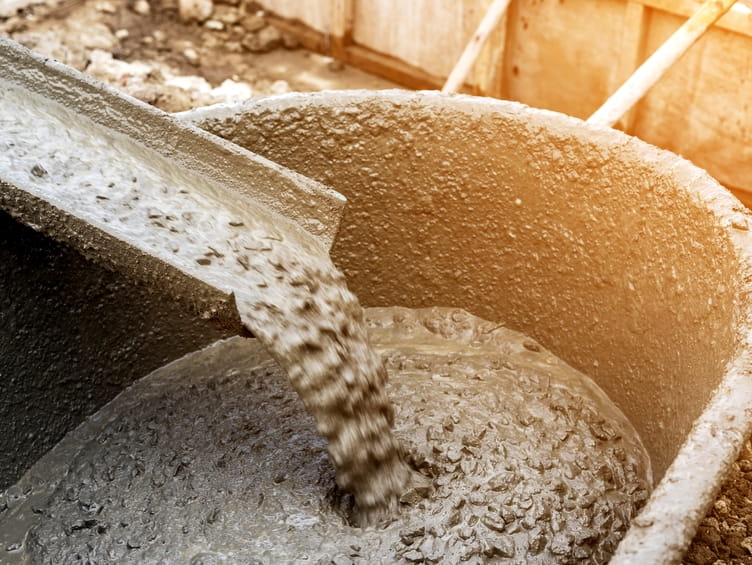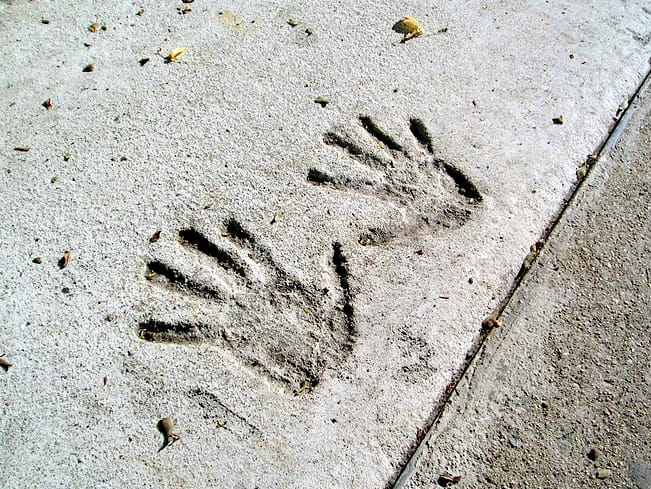Don't Get Burned by Cement

The Bottom Line
Cement is used widely. Its high pH makes it corrosive and it can burn the skin, eyes, mouth, and lungs. The best prevention is to avoid or minimize exposure to it.

The Full Story
Cement is a widely used building material. Whether you use it on the job, are having some cement work done at your home, or planning a do-it-yourself project, it’s important to know what cement can do if you come into direct contact with it.
Cement is available in many different products for commercial and home use. It is available in pure powder form or in premixed forms such as concrete (cement and aggregate [sand and gravel]), mortar (cement and sand), and grout (a more fluid form of cement). These different cement products have specific purposes. For example, you would use grout to fill spaces between tiles and mortar to bond bricks together.
Cement can cause caustic injury, resulting in chemical burns of any part of the body it comes in contact with - skin and eyes, mouth and throat if swallowed, and lungs if cement powder is inhaled. Cement is largely made up of calcium oxide. When it reacts with water, it produces highly alkaline (high pH) calcium hydroxide that can reach a pH of 12 or higher within a couple of minutes. This is why dry cement is less caustic than wet cement. Remember that the pH tells us how acidic or alkaline a solution is on a scale of 0 (most acidic) to 14 (most alkaline), with a neutral pH being about 7. So, because the pH of wet cement is so high, it can cause burns.
Some of the worst outcomes occur when cement gets into or seeps through boots, gloves, or clothing. By the time the person is aware of this, significant burns to the skin could have already occurred. The longer the cement stays on the skin, the more damaging the burn can be. Even after washing the cement off, the alkaline burn usually gets worse before it gets better. In severe cases of cement burn of the skin, the burn can extend deeper into tissues beneath the skin to damage muscle and even bone.
Other skin problems can also occur from cement. It’s gritty and contains chemicals that can cause dermatitis characterized by redness, swelling, and itching.
Swallowing cement can cause burns of the lips, mouth, throat, and stomach. Initial signs can include drooling, difficulty swallowing, or vomiting. In some cases, cement can harden in the gastrointestinal tract and cause obstruction. Inhaling cement dust can cause coughing, wheezing, and difficulty breathing.
The best prevention is to avoid or limit contact with cement. This means making sure to:
- Keep cement out of reach and sight of children and pets.
- Never transfer cement products out of their manufacturer’s containers into unmarked containers.
- Read and follow the manufacturer’s instructions for use.
- Wear appropriate personal protective equipment such as well-fitting gloves, masks, and boots when working with cement products.
If you inhale cement dust, move away from it and seek fresh air immediately. Upon contact with cement, remove contaminated clothing right away. If cement is on your skin or eyes, rinse it off immediately with cool or room temperature water for at least 15 minutes. If any cement is swallowed, rinse the lips and mouth thoroughly.
If you suspect someone has been exposed to a cement product, immediately check the webPOISONCONTROL® online tool for guidance or call Poison Control at 1-800-222-1222.
Serkalem Mekonnen, RN, BSN, MPH
Certified Specialist in Poison Information
Poisoned?
Call 1-800-222-1222 or
Prevention Tips
- Keep cement out of reach and sight of children and pets.
- Never transfer cement products out of their manufacturer’s containers into unmarked containers.
- Read and follow the manufacturer’s instructions for use.
- Wear appropriate personal protective equipment such as well-fitting gloves, masks, and boots when working with cement products.
This Really Happened
Case 1: A 2-year-old girl found an open bag of dry cement at home and poured it on herself. She began to cough and choke, then vomited twice. Her mother quickly gave her a bath and took her to a local emergency room.
In the ER, the child was drooling. She was no longer having any breathing problems, and her skin and eyes did not look irritated.
A nurse in the ER called Poison Control for treatment advice. Poison Control advised that cement is corrosive and recommended a thorough examination of the child’s skin, mouth, and eyes to see if there was any evidence of burns.
About 3 hours later, Poison Control called the ER to check on the child and learned that all of her symptoms had resolved and that she had been allowed to go home.
Case 2: A woman called Poison Control for advice because her 57-year-old husband had significant burns to his skin after working with cement 2 days prior. He had been kneeling in concrete he’d poured out and now had deep burns with some scabbing on both knees and shins. Poison Control advised the woman to take her husband to an emergency room for evaluation and treatment.
In the ER, the patient was found to have full-thickness burns, which means cement had damaged the deeper layers of the skin and even some tissue under the skin. He was admitted to the hospital and received standard burn care, which included cleaning the wounds, applying healing ointments to the burns, and wrapping them with protective bandaging. After he was discharged from the hospital, the patient was seen by a wound specialist until the wounds healed.
Poison Control kept in touch with the patient for over a month until his wounds had completely healed. During that time, he could not work and needed close monitoring and wound care.
For More Information
Caution with Caustics (The Poison Post®)
Portland Cement Association (PCA) – Working Safely With Concrete
Electronic Library of Construction Occupational Safety & Health
For Pet Owners
References
Spoo J, Elsner P. Cement burns: a review 1960-2000. Contact Dermatitis. 2001;45:68-71.
Poisoned?
Call 1-800-222-1222 or
Prevention Tips
- Keep cement out of reach and sight of children and pets.
- Never transfer cement products out of their manufacturer’s containers into unmarked containers.
- Read and follow the manufacturer’s instructions for use.
- Wear appropriate personal protective equipment such as well-fitting gloves, masks, and boots when working with cement products.
This Really Happened
Case 1: A 2-year-old girl found an open bag of dry cement at home and poured it on herself. She began to cough and choke, then vomited twice. Her mother quickly gave her a bath and took her to a local emergency room.
In the ER, the child was drooling. She was no longer having any breathing problems, and her skin and eyes did not look irritated.
A nurse in the ER called Poison Control for treatment advice. Poison Control advised that cement is corrosive and recommended a thorough examination of the child’s skin, mouth, and eyes to see if there was any evidence of burns.
About 3 hours later, Poison Control called the ER to check on the child and learned that all of her symptoms had resolved and that she had been allowed to go home.
Case 2: A woman called Poison Control for advice because her 57-year-old husband had significant burns to his skin after working with cement 2 days prior. He had been kneeling in concrete he’d poured out and now had deep burns with some scabbing on both knees and shins. Poison Control advised the woman to take her husband to an emergency room for evaluation and treatment.
In the ER, the patient was found to have full-thickness burns, which means cement had damaged the deeper layers of the skin and even some tissue under the skin. He was admitted to the hospital and received standard burn care, which included cleaning the wounds, applying healing ointments to the burns, and wrapping them with protective bandaging. After he was discharged from the hospital, the patient was seen by a wound specialist until the wounds healed.
Poison Control kept in touch with the patient for over a month until his wounds had completely healed. During that time, he could not work and needed close monitoring and wound care.
